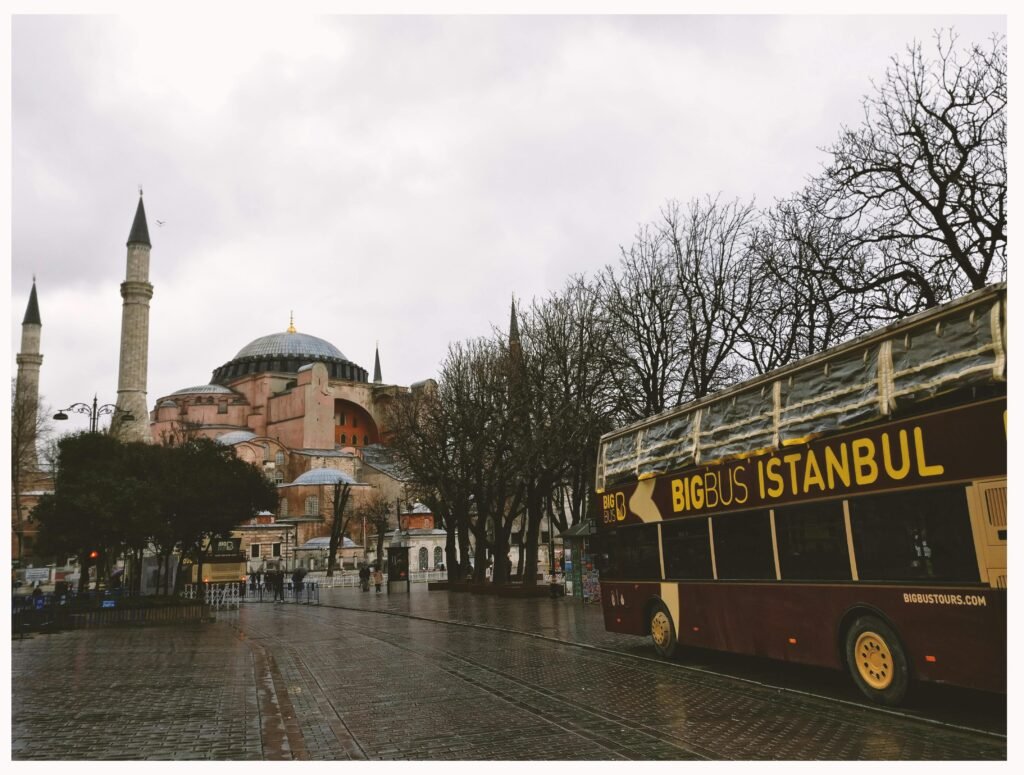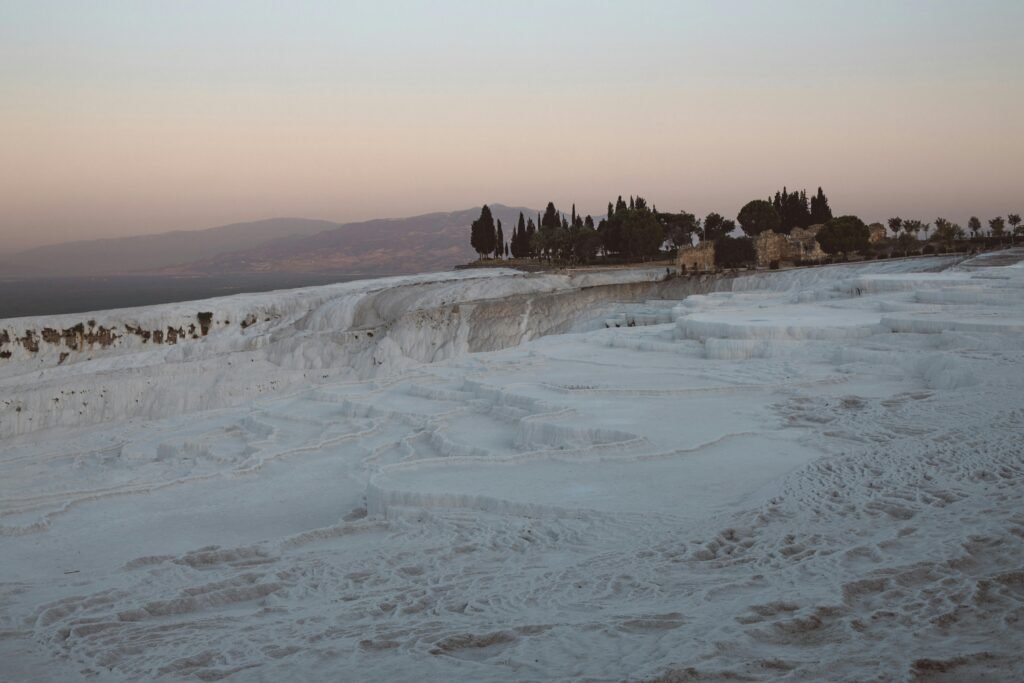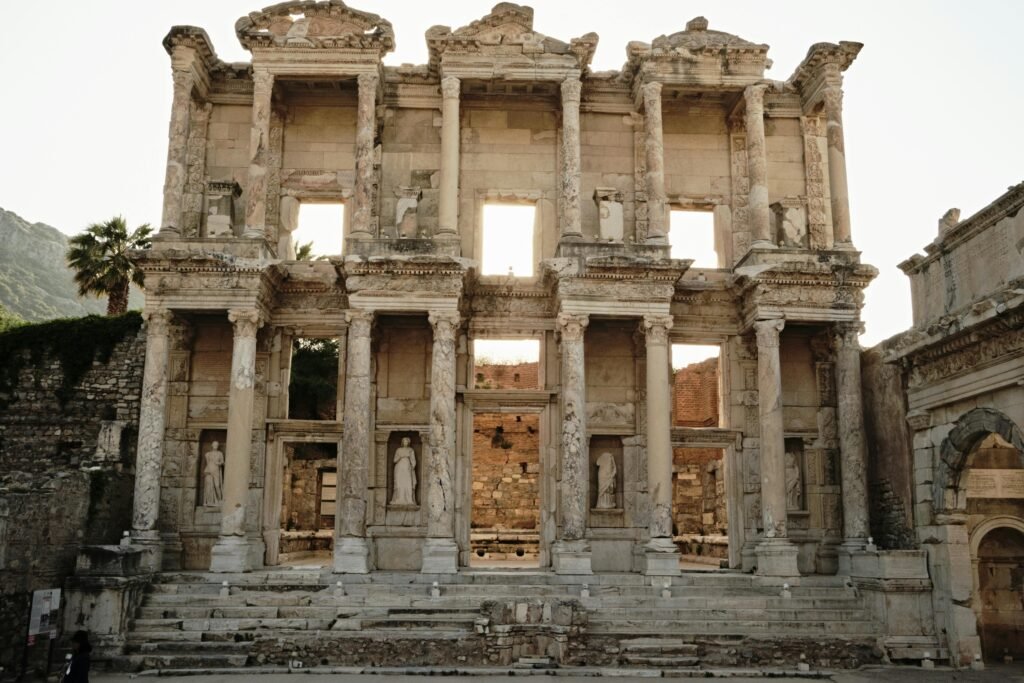Introduction to Turkey’s Tourism
Turkey, a transcontinental nation that straddles both Europe and Asia, emerges as a premier tourist destination, celebrated for its rich tapestry of history, vibrant culture, and breathtaking landscapes. This unique geographical position grants Turkey an abundance of historical sites, each holding stories that span millennia. Renowned landmarks such as the ancient city of Troy, the architectural marvel of Hagia Sophia, and the surreal landscapes of Cappadocia are merely glimpses into the vast offerings of this enchanting country.

The diverse cultural heritage of Turkey is equally captivating, with influences ranging from Byzantine and Roman to Ottoman civilizations. This rich eclectic mix is manifested in Turkey’s wide array of cuisines, traditions, and arts, contributing to an unrivaled travel experience. Beyond its historical significance, Turkey boasts a stunning natural landscape that includes picturesque coastlines along the Aegean and Mediterranean Seas, lush forests, and majestic mountains, appealing to both relaxation-seekers and adventure enthusiasts alike.
In recent years, Turkey has actively promoted its tourism sector, aiming to be the go-to destination for global travelers. The government has invested in infrastructure, improved accessibility to remote regions, and enhanced the overall tourist experience. As a result, Turkey offers a plethora of activities ranging from hot air ballooning over Cappadocia to exploring the bustling bazaars of Istanbul. The warm hospitality of Turkish people further enriches the visitor experience, making every traveler feel welcomed and cherished.
In summary, Turkey presents an irresistible allure for tourists who seek to explore a land where east meets west, history harmonizes with modernity, and natural beauty captivates the soul. It is not just a destination; it is a journey through time and tradition that leaves an indelible mark on all who visit.
Cappadocia: A Dreamlike Landscape
Cappadocia is often described as one of Turkey’s most enchanting regions, renowned for its surreal landscapes that appear to be from a fantasy world. Characterized by its unique rock formations, known as fairy chimneys, this area served as an important historical and cultural hub through centuries. The geological features have been sculpted by volcanic activity and erosion, resulting in a breathtaking and otherworldly terrain that captivates visitors from around the globe.
One of the most popular activities in Cappadocia is taking a hot air balloon ride at sunrise.Floating above the stunning valleys and rock formations offers a perspective unparalleled in its beauty, as the sun casts a golden hue over the landscape. This aerial experience provides fantastic photo opportunities and a unique vantage point to appreciate the vastness of Cappadocia’s natural beauty. It is advisable to book your balloon ride in advance, especially during peak tourist seasons in spring and autumn when many travelers flock to the region.
In addition to ballooning, there are numerous activities available to ensure a fulfilling stay in Cappadocia. Hiking through the Ihlara Valley or exploring the underground cities, such as Derinkuyu and Kaymakli, provides insight into the region’s rich history. Adventurous travelers may also consider taking part in an ATV tour for an exhilarating way to navigate the rugged terrains. For those interested in local culture, visiting traditional pottery workshops in Avanos or indulging in local cuisine at open-air restaurants offers an immersive experience in Cappadocian traditions.
Cappadocia should undoubtedly be on every traveler’s itinerary. The combination of its extraordinary landscapes, extensive history, and diverse activities ensures that visitors leave with lasting memories. Regardless of whether you are seeking adventure, relaxation, or cultural experiences, Cappadocia is a destination that can fulfill all types of desires, making it a must-visit location in Turkey.

Istanbul: A City of Two Continents
Istanbul, a city that uniquely straddles the continents of Europe and Asia, offers a rich tapestry of culture, history, and architecture that captivates millions of visitors each year. This metropolis, formerly known as Byzantium and Constantinople, serves as Turkey’s cultural and economic heartbeat. A visit to Istanbul is not complete without exploring some of its most iconic landmarks, which reflect its distinct heritage and blend of traditions.
One of the most significant sites in Istanbul is the Hagia Sophia, an architectural marvel that showcases Byzantine grandeur. Originally constructed as a cathedral in the 6th century, it later transformed into a mosque and now functions as a museum. The stunning dome and intricate mosaics highlight the city’s historical significance and religious evolution, making it a vital stop for tourists delving into Istanbul’s rich narrative.
Another noteworthy landmark is the Topkapi Palace, which once served as the residence of Ottoman sultans. This sprawling complex not only offers insight into royal life but is also home to an impressive collection of artifacts, including the famous Topkapi Dagger and the Spoonmaker’s Diamond. Visitors can stroll through the lush gardens and experience the grandeur of Ottoman architecture, which further enhances Istanbul’s charm.
For those seeking a more local experience, the Grand Bazaar presents an exhilarating atmosphere. Considered one of the largest and oldest covered markets in the world, it houses thousands of shops selling everything from spices to textiles and jewelry. Engaging with local merchants or bargaining for unique souvenirs provides an authentic taste of Istanbul’s vibrant marketplace culture.
Istanbul’s cultural diversity, historical significance, and bustling urban life make it an essential destination for anyone exploring Turkey. From the awe-inspiring Hagia Sophia to the lively Grand Bazaar, each corner of this iconic city tells a story that enriches the experience of its visitors.

Pamukkale: The Cotton Castle
Pamukkale, meaning “Cotton Castle” in Turkish, is a mesmerizing natural wonder renowned for its stunning white travertine terraces formed by the calcite-laden thermal waters that flow down the mountainside. This unique geological formation includes a series of cascading pools, each filled with crystal clear thermal water rich in minerals. Visitors to Pamukkale are often captivated by the sight of these ethereal terraces, which resemble sheets of cotton draped across the landscape, making it a must-see destination in Turkey.
The thermal waters in Pamukkale have been celebrated for their therapeutic properties since ancient times. Many believe that bathing in these mineral-rich waters can offer various health benefits, including alleviating skin conditions, promoting relaxation, and providing relief for certain ailments such as arthritis. The combination of warm temperatures and the unique composition of the spring waters allows for a rejuvenating experience, attracting both health-conscious travelers and those seeking a serene retreat from their daily lives.
Adjacent to Pamukkale lies the ancient city of Hierapolis, which adds a significant cultural dimension to the visit. Founded in the 2nd century BC, Hierapolis features an array of well-preserved ruins, including a theater, ancient temples, and an impressive necropolis. The historical context provided by Hierapolis complements the natural beauty of Pamukkale, allowing visitors to immerse themselves in both nature and history. Walking through the ancient streets or visiting the Roman baths enhances the overall experience, providing insights into the lives of those who once thrived in this region.
Overall, Pamukkale stands out as a prime destination for travelers seeking a unique blend of natural beauty and ancient history. The travertine terraces, combined with the rich heritage of Hierapolis, create an unforgettable experience that illustrates Turkey’s multifaceted attractions.

Ephesus: A Glimpse into Ancient History
Ephesus stands as one of the most remarkable archaeological sites in the world, representing the height of ancient Greek and Roman civilization. Located on the western coast of Turkey, this UNESCO World Heritage site offers a captivating insight into a city that was once a thriving hub of trade, culture, and spirituality. Established in the 10th century BC, Ephesus flourished and became well-known for its monumental architecture and urban planning, leaving a legacy that continues to draw millions of tourists each year.
Among the many landmarks, the Library of Celsus remains one of the most iconic buildings of ancient Ephesus. Constructed in the 2nd century AD, this architectural marvel once housed thousands of scrolls and served as a mausoleum for its patron, Tiberius Julius Celsus Polemaeanus. Visitors to the site can admire the intricate façade, which showcases an exceptional blend of Greco-Roman architectural styles. The library not only speaks to the importance of knowledge and literacy in ancient times but also symbolizes the cultural excellence that defined Ephesus.
Another significant structure is the Temple of Artemis, one of the Seven Wonders of the Ancient World. Although much of the temple has not survived the ravages of time, its historical significance remains undeniable. Built in honor of the goddess Artemis, this temple was a center for worship and commerce, highlighting the city’s importance as a religious and economic powerhouse. Walking through the ruins of Ephesus allows tourists to experience a palpable sense of history, as the remnants of streets, theaters, and homes evoke the everyday lives of the ancient inhabitants.
As visitors wander through Ephesus, they traverse not only the remnants of stone but also the narratives of a glorious past, immersing themselves in a rich tapestry of cultural and historical heritage that defines Turkey’s enduring allure as a tourist destination.

The Aegean and Mediterranean Coasts: Sun and Sea
Turkey’s coastlines along the Aegean and Mediterranean Seas are renowned for their stunning beauty and vibrant culture, making them attractive destinations for sun-seeking tourists. The region boasts numerous beach destinations that cater to a variety of preferences, from tranquil shores to bustling seaside resorts. Popular areas such as Bodrum and Antalya exemplify the allure of Turkey’s coastal offering, each featuring unique characteristics that enchant visitors.
Bodrum, located on the Aegean coast, is famous for its lively atmosphere and beautiful beaches. It encompasses a blend of ancient history and modern luxury, highlighted by the imposing Bodrum Castle and the ancient Theatre of Halicarnassus. Travelers can lounge on sandy beaches or partake in water activities such as sailing, snorkeling, and jet skiing, which further enhance the appeal of this coastal gem. Additionally, Bodrum is known for its vibrant nightlife, attracting those looking to socialize after a day of sun and sea.
On the other hand, Antalya, situated along the Mediterranean coast, offers a striking contrast. With a rich historical backdrop including the ancient city of Perge and the picturesque Old Town (Kaleiçi), visitors can engage in both relaxation and exploration. The beaches here are adorned with crystal-clear waters ideal for swimming and sunbathing. Moreover, the region presents myriad adventures through water sports like paragliding and scuba diving, making it a favorite among thrill-seekers. The coastal towns are also well-regarded for their Mediterranean cuisine, ensuring that every moment spent here is a feast for the senses.
Overall, the Aegean and Mediterranean coasts of Turkey represent a harmonious blend of natural beauty and cultural richness, making them quintessential locations for tourists seeking an enriching experience under the sun.

Culinary Delights: A Taste of Turkey
Turkey is renowned for its rich and diverse culinary heritage, which reflects the country’s unique history and geographical location. A confluence of various cultures, Turkish cuisine showcases a broad spectrum of flavors and ingredients, making it a focal point for food enthusiasts and travelers alike. Among the staple dishes, one cannot overlook the iconic kebabs, which excel in both flavor and variety. From the succulent Adana kebab to the tender shish kebab, each region offers its own interpretation, often accompanied by perfectly grilled vegetables and aromatic rice.
Baklava, another hallmark of Turkish desserts, is a delightful confection that features layers of filo pastry, nuts, and honey, providing an exquisite end to any meal. The careful balancing of sweetness and texture in baklava captivates both locals and visitors. However, Turkish culinary experiences are incomplete without an array of mezes—small plates that serve as appetizers. These include stuffed grape leaves, hummus, and spicy eggplant dishes, each contributing to the vibrant tapestry of flavors present in the Turkish dining landscape.
The importance of food culture in Turkey extends beyond just meals; it is a significant aspect of social life and hospitality. Dining in Turkey often involves long, leisurely meals among family and friends, reflecting the nation’s values of togetherness and generosity. For those wishing to immerse themselves in this culinary paradise, a visit to local markets or traditional restaurants is highly recommended. Here, one can sample authentic dishes prepared with age-old techniques, providing insight into Turkey’s gastronomic traditions. Whether enjoying a street-side kebab or indulging in an elaborate multi-course feast, the experiences are sure to create lasting memories and a deeper appreciation for this remarkable country’s culinary delights.
Cultural Experiences: Festivals and Traditions
Turkey is known for its rich cultural heritage, which is deeply intertwined with its vibrant festivals and traditional ceremonies. These events not only highlight the country’s diverse history but also provide tourists with an exceptional opportunity to immerse themselves in authentic Turkish culture. Each region in Turkey celebrates unique traditions, showcasing a variety of customs that reflect the local communities’ values and way of life.
One of the most notable festivals is the Antalya International Film Festival, which attracts filmmakers and cinema enthusiasts from around the world. This event serves as a platform for showcasing both local and international films, allowing visitors to experience the creative spirit of Turkey. Additionally, the Istanbul Music Festival celebrates classical music, featuring renowned artists and orchestras that enhance the cultural landscape of this vibrant city.
Local customs play a significant role in the cultural experiences offered to tourists. For instance, the Whirling Dervishes, who perform Sema, invite onlookers to witness their spiritual journey, embodying the mystical side of Turkish culture. This ceremony not only captivates the audience but also serves as a valuable insight into the country’s spiritual traditions. Moreover, festivals such as Ramadan and Eid al-Adha reflect strong communal values, highlighting the importance of family, friendship, and generosity within Turkish society.
Culinary festivals, such as the Gaziantep Gastronomy Festival, emphasize the significance of food in Turkish culture. Tourists can indulge in regional delicacies while learning about the history and traditions associated with various dishes. Participating in such events not only enriches the travel experience but also fosters a deeper appreciation for the intricate tapestry of Turkish customs and traditions. By engaging with these cultural experiences, visitors can ensure a memorable and enriching journey through Turkey’s diverse landscape.
Travel Tips: Making the Most of Your Visit
Visiting Turkey, a country that bridges East and West, offers an array of experiences and cultural richness. To make the most out of your trip, several practical travel tips can enhance your journey. Firstly, the timing of your visit is crucial. The best months to travel to Turkey are primarily from April to June and September to October when the weather is pleasant, and tourist crowds are manageable. These spring and autumn months allow for comfortable exploration without the sweltering summer heat.
When it comes to transportation, Turkey presents a variety of options. Major cities, such as Istanbul, offer extensive public transport systems that include buses, trams, and ferries, making city travel efficient and affordable. For intercity travel, consider using the high-speed train network or domestic flights to traverse longer distances quickly. Additionally, car rentals are available, although navigating city traffic can be challenging.
Understanding cultural etiquette in Turkey is essential for a respectful visit. Greeting locals with a polite “Merhaba” (Hello) and practicing basic Turkish phrases can significantly enhance personal interactions. Remember that hospitality is a hallmark of Turkish culture, and being courteous and respectful will be appreciated. Moreover, in local markets and restaurants, haggling is often expected, but it should be done amicably.
Language can be a barrier, so it may be helpful to carry a translation app or a phrasebook, especially in rural areas where English may not be widely spoken. Overall, blending in with the local customs and making an effort to engage in the Turkish language and traditions can offer a richer, more immersive experience.
With these travel tips, visitors can navigate their way through Turkey’s diverse landscapes and vibrant cities, making the most of their unforgettable journey.

Hiya, I am really glad I have found this info. Today bloggers publish just about gossips and net and this is actually irritating. A good web site with exciting content, this is what I need. Thank you for keeping this website, I’ll be visiting it. Do you do newsletters? Can not find it.